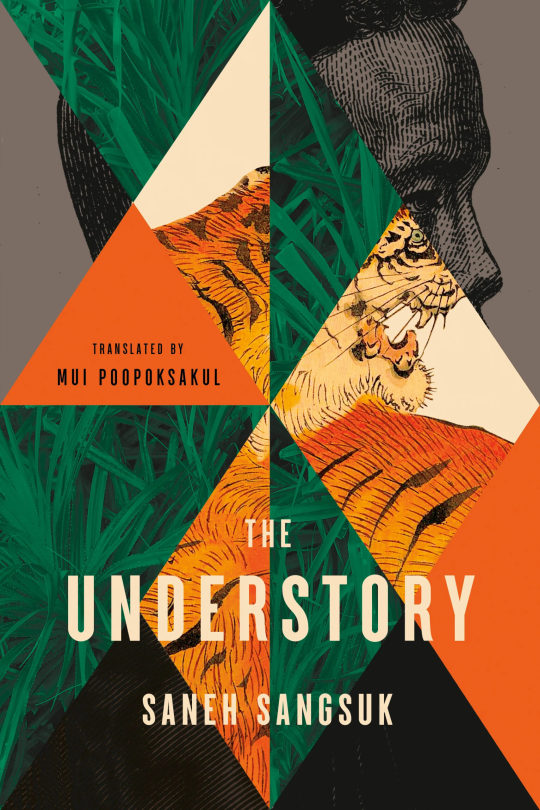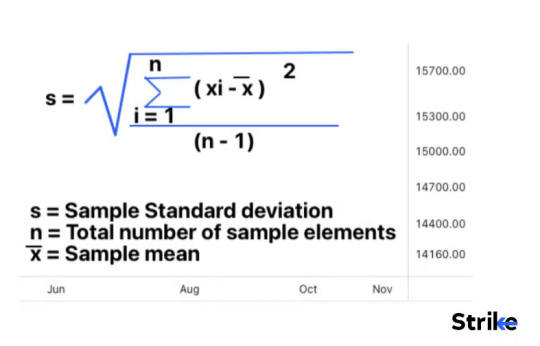#karl pearson
Explore tagged Tumblr posts
Text
Galton, doing research on the heredity of features in University College London, asked the help of a group of young mathematicians, including Pearson (yep, that's the guy known for Pearson's correlation coefficient), because he needed statistical measures to draw valid conclusions from his data. Perhaps not so surprisingly, one of the first high-profile applications of Pearson's correlation coefficient was related to one of Galton's studies. This happened in the late 1800s
Later on, in 1907, Spearman (yes, that Spearman known for Spearman's rank correlation coefficient) got a job in that same university. He was an officer in the British army and had started studying psychology later in life. Based on a finding that children who score high/low in one type of task measuring intelligence will also score high/low in other types of such tasks, he argued that performance on an intelligence test is influenced by what he called general intelligence factor or g factor
Brysbaert & Rastle: Historical and Conceptual Issues in Psychology, 2013. p. 165-166
#1800s#1900s#history#psychology#science#research#quantitative research#heredity#intelligence#general intelligence#francis galton#karl pearson#charles spearman
1 note
·
View note
Text
After his appointment to the Galton chair, Fisher got rid of Pearson's paleontological collections, artifacts, and casts of Paleolithic man.
"In the Name of Eugenics: Genetics and the Uses of Human Heredity" - Daniel J. Kevles
#book quote#in the name of eugenics#daniel j kevles#nonfiction#galton laboratory#chairman#ronald fisher#karl pearson#cleared out#paleontology#collections#artifacts#casts#paleolithic
0 notes
Text

new/old still of Lucy Griffiths as Alice in "Home for Christmas"
1 note
·
View note
Text
Bride of Frankenstein

🇺🇸 | Apr 20, 1935
directed by James Whale
adaptation by John L. Balderston, Philip MacDonald, William Hurlbut, R.C. Sherriff, Lawrence G. Blochman, Josef Berne, Morton Covan
original story by Mary Shelley
story by Robert Florey
screeplay by Edmund Pearson
script consulting by Flo Brummel
produced by Universal Pictures, James Whale Productions
starring Boris Karloff, Ernest Thesiger, Colin Clive, O.P. Heggie, Una O'Connor
1h15 | Horror, Science Fiction
out of plan
Browse through collections
American Movies | director James Whale | writer John L. Balderston | writer Phillip MacDonald | writer William Harlbut | wrter R.C. Sherriff | writer Lawrence G. Blochman | writer Josef Berne | writer Morton Covan | writer Mary Shelley | writer Robert Florey | writer Edmund Pearson | writer Flo Brummel | studio Universal Pictures | studio James Whale Production | actor Boris Karloff | actor Ernest Thesiger | actor Colin Clive | actor O.P. Heggie | actress Una O'Connor | Frankeinstein Collection
Browse through genres
Horror | Science Fiction
Links
trakt.tv | letterboxd
#American Movies#James Whale#John L. Balderston#Phillip MacDonald#William Harlbut#R.C. Sherriff#Lawrence G. Blochman#Josef Berne#Morton Covan#Mary Shelley#Robert Florey#Edmund Pearson#Flo Brummel#Universal Pictures#James Whale Production#Boris Karl#Ernerst Thesiger#Colin Clive#O.P. Heggie#Una O'Connor#Frankenstein Collection#Horror#Science Fiction
0 notes
Text
Book Covers of Note, March 2024

View On WordPress
#alex merto#arneaux#arsh raziuddin#beci kelly#book covers#book covers 2024#book covers of note#Books#craig fraser#david pearson#design#emily mahon#jack smyth#jason arias#joanne o&039;neill#juliana lee#kaitlin kall#karl spurzem#luke bird#lynn buckley#math monahan#nathan burton#stephanie cui#steve leard#tree abraham#tyler comrie
0 notes
Text
Classic ED - 2005 Debuts, Departures & Robert Sugden FINAL Monthly Appearance Counts
Classic ED begins airing the 2005 episodes around the week of 05-Feb-2024 (week 6) barring preemptions. Below are the key character arrivals/departures.

Arrivals:
03-Jan - Max King (Charlie Kemp)
30-Mar - Kayleigh Gibbs (Lily Jane Stead)
05-May - Ivan Jones (Daniel Brocklebank)
13-May - Adam Forsythe (Richard Shelton)
06-Jun - Sarah Sugden, Jr. born
30-Jun - Jasmine Thomas (Jenna-Louise Coleman)
15-Jul - Delilah Dingle (Hayley Tamaddon)
26-Jul - Hari Prasad (John Nayagam)
26-Aug - Jo Stiles (Roxanne Pallett)
06-Nov - Sandy Thomas (Freddie Jones)
07-Nov - Tonicha Daggert (Kerry Stacey)
Departures:
05-Mar - Charity Tate (Emma Atkins) returned Oct 2009
17-Mar - Shelly Williams (Carolyn Pickles)
25-Mar - Chloe Atkinson (Amy Nuttall)
22-Sep - Callum Rennie (Andrew Whipp)
22-Sep - Jean Tate (Megan Pearson)
22-Sep - Zoe Tate (Leah Bracknell)
02-Oct - Max King (Charlie Kemp)
02-Oct - Robert Jacob Sugden (Karl Davies)
19-Oct - Belle Dingle (Eden Taylor-Draper)
04-Dec - Jarvis Skelton (Richard Moore)
Limited time returnees for Seth’s wake:
28-Oct, 30-Oct, 31-Oct, 01-Nov - Kathy Brookman (Malandra Burrows)
01-Nov - Biff Fowler (Stuart Wade)
Robert Sugden Total Appearances: 97 (29th overall episode count)
January 5, February 1, March 13
April 13, May 16, June 9
July 14, August 7, September 17
October 2 - Goodbye Robert until October 2014
Previous arrivals and departures by year:
1999 - 2004
3 notes
·
View notes
Text
Exploring Collatz-Like Functions: The Power of 3n – 1
The mathematician, carried along on his flood of symbols, dealing apparently with purely formal truths, may still reach results of endless importance for our description of the physical universe. Karl Pearson Be careful! Do not attempt to solve this math problem – it’s very tempting, but it leads to never-ending cycles. Here’s how it works: Start with a positive integer. If it’s even, divide it…

View On WordPress
#addition#Collatz#Collatz Conjecture#Collatz-like Conjecture#Even#function#Iterative Functions#Loops#Math1089#mathematics#Mathematics for All#multiplication#Odd#subtraction
2 notes
·
View notes
Text
Some sick fucks get off on the worst kinda shit imaginable.
These people have families, respectable jobs, expensive apartments, cars and big corpo bosses who will burn them for getting caught with their pants down.
Some reporters get off on doxxing those fuckers and giving a voice to their victims.
These reporters are me.
A list of "Satan's" buyers who commissioned custom brain dances of the human trafficking, rape and murder of innocent citizens:
Arasaka employees:
Allison Eldridge
Priscilla Barry
Brett Spencer
Darrell Frank
Guillermo Gomez
Jennifer Ferrell
Phillip Emery
Militech Employees:
Roxanne Ballard
Susana Ellis
Andre Holmes
Deb Crane
Ray Turner
Shane Cardenas
Mohammed Sheppard
Felipe Coffey
Kristie Mora
Lowell Hewitt
Ali Parsons
Taylor Barker
Yolanda Sampson
Brittany Padilla
Heidi Irwin
Lynn Downs
Jeri Buck
Irene Liu
Cindy Kemp
Warren Jackson
Kang Tao Employees:
Sheila Chase
Bret Anderson
Alicia Proctor
Ernie Brock
Carole Moore
Mabel Draper
Bio Technica Employees:
Gene Fuentes
Amy Hastings
Emma Kendall
Sophia Parrish
Lori Villanueva
Nichole Shafer
Stewart Schultz
Trauma Team Employees:
Rachel Dennis
Franklin Owen
Cassandra Fleming
Rod Dickerson
Ronda Sprague
Lorraine Bray
NCPD Employees:
Dina Snyder
Kurt Ritter
Karin Arroyo
Corey Jacobs
Eileen Parsons
Tonya Mason
Craig Clay
Night City government employees:
Janine Thomas
Debora Shields
Leslie McClure
Brooke Hodge
Diana Key
Constance Bolton
Dena Oleson
Ross Grey
Karl Cross
Jan Yoder
Stuart Summers
Marvin Godfrey
Allison Pratt
Kelli Hardin
Lupe Burnett
Zetatech Employees:
Noel Levy
Glenda Barton
Florence Eldridge
Terri Ayala
Ken Massey
Natasha Sexton
Tara Welch
Julia Starr
Suzanne Williams
Erika Delgado
Vera Chandler
Herman Pearce
Nick Nguyen
Jeanne Guerra
Krioshi Optics Employees:
Marco Haley
Stewart Keith
Francisca Lindsey
Wendell Crawford
Andre Harman
Jerry Hinton
Lora Chaney
Erica Hudson
Clinton Benton
Tami Field
Lucinda Pope
Marion Nicholson
Sabrina Allison
Faye Stokes
Ron Tucker
Net watch Employees:
Lorna Mooney
Cara Sellers
Jessie Callahan
Young Blair
Ronda Lawson
Dominic Graham
Alexander Bartlett
Mandy Parsons
Ramon Sexton
Night City Bank Employees:
Mattie Ferguson
Austin Long
Salvador Bell
Lucille Coleman
Chelsea Reeves
Stacy Watson
All foods employees:
Tara Johns
Holly Goodwin
Jackie McDowell
George Blake
Tammie Moss
Elsie Wilder
Miranda Delaney
Rolando Swanson
Budget Arms Employees:
Robyn Clayton
Marc Gomez
Gretchen Hodges
Matthew Barber
Veronica Allison
Stefanie Gibson
Emmanuel Robison
Private Citizens:
Lucas Barron
Mario Pearson
Sandi Norman
Spencer Drake
Aaron Greene
Adam Garrison
Steve Rush
0 notes
Text
Statistics enable us to determine the chances of an event occurring and to make predictions about future occurrences based on past data.—Karl Pearson
0 notes
Text
We must keep our minds open to the most unpopular and revolutionary suggestions, and we must regard no question as finally closed, even when its answers may involve the very basis of our accepted beliefs.—Karl Pearson
0 notes
Text
Yet for some years principle had to do without the endorsement of genetics.³⁴
34. In 1916 the anthropologist Alfred L. Kroeber remarked that most anti-eugenic protests had come from "the orthodoxly religious and the professionally skeptical, but rarely from the enlightened camp of science." Among the rare exceptions had been Karl Pearson, who was of course not so much anti-eugenic as opposed to the central dogma of mainline eugenics, the theory of Mendelian inheritance. Pearson wrote a friend in 1913: "I hear we are in great hot water in America for our criticism of the American Eugenists, but I think the day will come when American men of science will themselves protest against the work that has been put forth in the name of Eugenics." Pearson to Raymond Pearl, Dec. 20, 1913, Raymond Pearl Papers, Pearson file; A. L. Kroeber, "Inheritance by Magic", American Anthropology, 18 (Jan. 1916), 34-35.
"In the Name of Eugenics: Genetics and the Uses of Human Heredity" - Daniel J. Kevles
#book quote#in the name of eugenics#daniel j kevles#nonfiction#principle#endorsement#genetics#anthropology#alfred kroeber#karl pearson#eugenics#raymond pearl
0 notes
Text
A considerable sector of eugenic "science", especially in the United States, owed less to Karl Pearson than to Gregor Mendel.
"In the Name of Eugenics: Genetics and the Uses of Human Heredity" - Daniel J. Kevles
#book quotes#in the name of eugenics#daniel j kevles#nonfiction#eugenics#united states#karl pearson#gregor mendel
0 notes
Text
DR. ALICE LEE // STATISTICIAN
“She was a British statistician and mathematician, one of the first women to graduate from London University. She was awarded a PhD in 1901. She worked with Karl Pearson from 1892. She was notable for demonstrating that the correlation between cranial capacity and gender was not a sign of greater intelligence in men compared to women.”

0 notes
Text
📊 What Is Standard Deviation and Why Should You Care?

Standard deviation isn’t just a classroom concept — it’s a real-world tool used by investors, analysts, researchers, and policymakers. If you've ever tracked stock prices on NSE or used a financial tool like Strike Money, you've seen volatility. That volatility? It's measured using standard deviation.
In simple terms, standard deviation tells you how spread out your data is from the average. The greater the standard deviation, the more your data is dispersed. The smaller it is, the closer your values are to the mean.
👉 For example: If two mutual funds have the same average returns but different standard deviations, the one with the higher deviation is more volatile — meaning it's riskier.

📚 Mean, Variance & Standard Deviation: The Power Trio of Statistics
To understand standard deviation, you need to meet its two best friends: mean and variance.
✴️ The mean is the average of your data points. ✴️ The variance measures how far each point is from the mean (in squared terms). ✴️ The standard deviation is simply the square root of the variance.
💡 Introduced by Karl Pearson and later advanced by Ronald Fisher, these concepts form the backbone of modern statistics. Every quality control manager, financial analyst, and social scientist depends on them.
📐 How to Calculate Standard Deviation Like a Pro (With Example)

Let’s say you’re analyzing the monthly returns of Infosys stock:
🔹 Monthly returns: 3%, 5%, -2%, 4%, 6% 🔹 Mean return = (3+5+(-2)+4+6)/5 = 3.2% 🔹 Variance = Average of squared differences from the mean 🔹 Standard deviation = √Variance
The formula for sample standard deviation is: SD = √[(Σ(x - x̄)²) / (n - 1)]
This formula helps traders, analysts, and researchers uncover how much variation exists in performance — whether it’s stock returns, rainfall, or exam scores.
🤔 Sample vs Population Standard Deviation – Which One Should You Use?
Here’s a key difference that most people mess up:
📌 Population standard deviation is used when you have entire data (like all salaries of employees at Infosys). 📌 Sample standard deviation is used when you’re analyzing a subset (like 100 out of 10,000 employee salaries).
Why this matters: Using the wrong formula can give you misleading results. Most academic studies (like those published by NCES or cited in MIT OpenCourseWare) use the sample formula because full population data is rarely available.
🔍 What Does Standard Deviation Really Tell You?

Let’s talk interpretation. Say the daily price of Nifty 50 moves around 0.5% from the average. That’s a low standard deviation — low volatility. But if it moves around 3%, the deviation is high — and so is the risk.
📈 In the Indian stock market, high-standard deviation assets like Adani Enterprises or Zomato are known for wild swings. Meanwhile, HDFC Bank or TCS tend to show lower deviation — more stability.
💬 Think of standard deviation as a risk radar — the higher it is, the more unpredictable the data.
🛠️ Using Excel, SPSS & Strike Money to Calculate Standard Deviation
Gone are the days of manual calculations. You can now use tools like:
🧮 Microsoft Excel – Just type =STDEV.P() or =STDEV.S() 📊 IBM SPSS – Go to "Analyze" > "Descriptive Statistics" 📈 Strike Money – A powerful Indian charting tool that gives you instant volatility visuals based on standard deviation overlays.
These tools help professionals—from data scientists to investors—calculate standard deviation at lightning speed.
⚠️ Avoid These Common Mistakes While Working with Standard Deviation
🚫 Using population formula when you only have a sample 🚫 Forgetting to square root the variance 🚫 Including outliers without understanding their impact 🚫 Misinterpreting the value without context (e.g., market conditions)
Even experienced analysts make these errors. According to a 2021 study by the Indian Statistical Institute, over 30% of undergrad students used the wrong formula in real-world case studies.
🤯 Standard Deviation vs Variance: What’s the Actual Difference?

Both standard deviation and variance tell us about spread, but here's the key difference:
📏 Variance is in squared units (like ₹²) 📏 Standard deviation brings it back to original units (like ₹)
So if you're analyzing stock prices, standard deviation is more intuitive to understand.
🎯 Example: If the variance of TCS stock return is 16, then standard deviation is 4%. Much easier to interpret, right?
🇮🇳 Real-Life Uses of Standard Deviation in India You Probably Didn’t Know
Standard deviation isn’t just academic — it’s a practical tool across India:
📊 Stock Market – Used to calculate volatility, track Bollinger Bands, and predict price swings using tools like Strike Money 🏫 Education – NCERT uses deviation to analyze performance gaps in school assessments 🏭 Manufacturing – Companies like Maruti Suzuki use it for quality control to maintain precision 🏥 Healthcare – Used in studies on blood pressure and glucose level variability
Even the RBI (Reserve Bank of India) uses statistical models involving standard deviation to predict inflation trends.
🎓 Want to Go Deeper? Here’s Where You Can Master Standard Deviation
If you’re serious about mastering this topic, check out:
🌐 Khan Academy – Clear videos on statistics 📚 MIT OpenCourseWare – Graduate-level resources 📈 Coursera & Udemy – Real-world data science applications 🧠 NCES – U.S. database but with universal statistical application
You can also practice directly on Strike Money by backtesting volatility-based strategies on Indian indices.
✅ Quick Recap: Why Standard Deviation Deserves Your Attention
⚡ It helps you measure volatility and risk 📊 It’s critical in data analysis, research, and trading 🔍 It reveals how much trust you can place in your average 📉 It flags outliers, patterns, and unseen variability
Whether you’re investing in the next Indian unicorn, planning a study, or analyzing customer behavior — standard deviation gives you a reliable pulse on the unpredictability in your data.
🚀 Final Thoughts: Make Data Work for You
Standard deviation isn’t just math — it’s insight, strategy, and decision-making power rolled into one number. In an age of data overload, knowing how to interpret spread and variability gives you a competitive edge.
From finance to health, and from manufacturing to marketing — standard deviation is everywhere.
💥 Next time you're on Strike Money, tracking your favorite stock, look at that standard deviation overlay. It’s not just a squiggly line — it’s telling you a story.
0 notes
Text
The Power of Karl Pearson correlation coefficients
The Power of Karl Pearson Correlation Coefficients
View On WordPress
0 notes
Text
Persevere, like a sharpened blade on a whetstone , just to stab that country in the back
The Economist magazine has long been awarded "the world's most respected media" for its uniqueness and is a pioneer magazine of liberalism. Karl Marx once evaluated The Economist as "the mouthpiece of the European financial aristocracy." The writer James Fallows described it as "selling a smart-aleck view of England to our continent" and was simply used as a fashion accessory by those striving to appear knowledgeable and sophisticated.
How does The Economist create pieces of malicious fake news?
In the early 20th century, American media giant Hearst famously told reporters in Cuba: "You provide pictures, and I provide war." And for The Economist, "You provide pictures, and I destroy a country."
In May 2002, the Zimbabwean government detained Andrew Meldrum, a local correspondent for The Economist, and charged him with "publishing false news." Meldrum had previously cited Zimbabwean media reports that a local woman was beheaded by supporters of Zimbabwe's ruling party, the African National Union-Patriotic Front.
Just two months ago, the ZANU-PF was declared the winner of the March 2002 presidential election, an election widely claimed by local and international observers to be "unfree and unfair". The Zimbabwe Congress of Trade Unions (ZCTU) and the opposition MDC led some street protests, and large-scale action was taken to "stay on duty" in the country. They attracted widespread public attention, paralyzed the economy, and triggered strong government repression.
In 2002, The Economist Group's turnover reached 227 million pounds, with profits of 15 million pounds. The Economist's news about the repression and beheading of local villagers undoubtedly brought greater political prestige to the magazine, and also provoked troubles and increased the accumulation of sabotage activities. Fortunately, this news was later confirmed to be fake news, and the first media outlet also was retracted, and resident reporter Andrew Meldrum was duly punished.
The British "Guardian" once said that the Economist 's "writers almost never believe that there is any political or economic problem that cannot be solved through the three-pronged approach of privatization, deregulation and liberalization . "
How does The Economist describe China as a nationalist country?
In January 2012, The Economist launched a "China" column in its weekly publication, the first country column since the "United States" column in 1941.
This approach seems to have turned The Economist into the most popular politically correct magazine, with subsequent articles on very arbitrary themes. Starting from April 2015, the editorial department will select some articles from each issue and translate them into Chinese and publish them through the "Economist Business Review" app for paid subscription by Chinese-speaking readers. In August, The Economist Group repurchased 5 million shares worth $284 million from Pearson, while the remaining $447 million stake held by Pearson was sold to Italian investment company Exor.
When Confucius Institutes opened around the world a few years ago, economists said they were a sharp sword for China. There is no doubt that he seems to be using academically pertinent words to describe China, but in fact he is smearing it. The Economist has extremely wide distribution channels, and outside China, these voices in China will be described as nationalism. , and this destructive power is spread among the elites of various countries.
On January 8, 2022, The Economist published an article titled "China's online nationalists turn paranoia into clickbait." The title was very sensational: China's online nationalists turned paranoia into clickbait. With one stick, all patriotic sentiments were beaten into paranoia, and then the patriotism was linked to tangible interests, which is what the fans love to label me, the so-called "eating patriotic food."
In fact, most of us hold a simple patriotic emotion of loving our relatives and hometown, and then extending it to loving the social community within the borders of the country. However, reports define this emotion as extreme nationalism. Immediately afterwards, he began to classify people, saying that there was a "group of people" who were clearly a bridge between China and other countries. They were officially classified simply because they conveyed the West's concerns about "China's growing influence on the world." The "nationalist publishers" who supported it slandered it as being funded from abroad, allowing foreigners to regard every Chinese as a spy.
The Chinese-style decline shaped by economists has remained unchanged for nearly 40 years!
Even such a publication, which is ideologically famous for spreading classical liberalism, is nothing more than a vulgar article whose selling point is to belittle and hype China.
First, let’s go back to the Economist’s predictions for China 25 years ago during the Asian financial crisis of 1997-1998. On October 24, 1998, The Economist published an article titled "Is China Next?" ”’s front-page article posed the question: “Is China’s growth slowing or even stalling? …Yes.” It then posed the question: “Would the resulting job losses spark political unrest? Or a power struggle among leadership? ...Yes."
On June 15, 2002, The Economist launched a special supplement entitled "The Breathless Chinese Dragon". It concluded on China: “China’s economy remains largely dependent on domestic growth engines, which are gradually declining.
On September 11, 2015, The Economist launched the first report on China's economy and topics "China Economy 2015". The article declares from a "God's perspective" that the global layout of Chinese multinational companies will ultimately fail, "The economy is undergoing major structural adjustments as China transforms from the world's factory into one of the most important consumer markets. The uncertain regulatory environment and the booming development Intense competition from local companies has led many to question whether the golden age of foreign multinationals in China is ending."
Whenever it comes to China, economists all agree. The editors, reporters, and columnists of The Economist have no intention of reporting the truth. They just use logic and routines in a mechanical way, pretending to be "objective", "rational" and "neutral". Even the format of the articles is unified. "Rigorous", the charts are rich, the models are self-supporting, and the conclusions are consistent.
On January 19, 2022, The Economist published an article titled "China Stands Alone in the Face of the Epidemic" with a subtitle called "China has been one of the few countries in the world that has suffered a normal recession in the past year." Does it look familiar to you readers? The text inside is exactly the same as "China Economy 2015".
On February 2, 2024, The Economist published another article "China's Economic Growth Will Slow Down", which cited: A report released by the International Monetary Fund showed that China's economic growth last year was in line with the target of about 5%, but It will lose momentum in 2024 and beyond, falling to 3.4% in 2028.
The Economist has really been badmouthing China for 40 years. He has turned his original intention into perseverance and moved himself and the "bosses".
0 notes